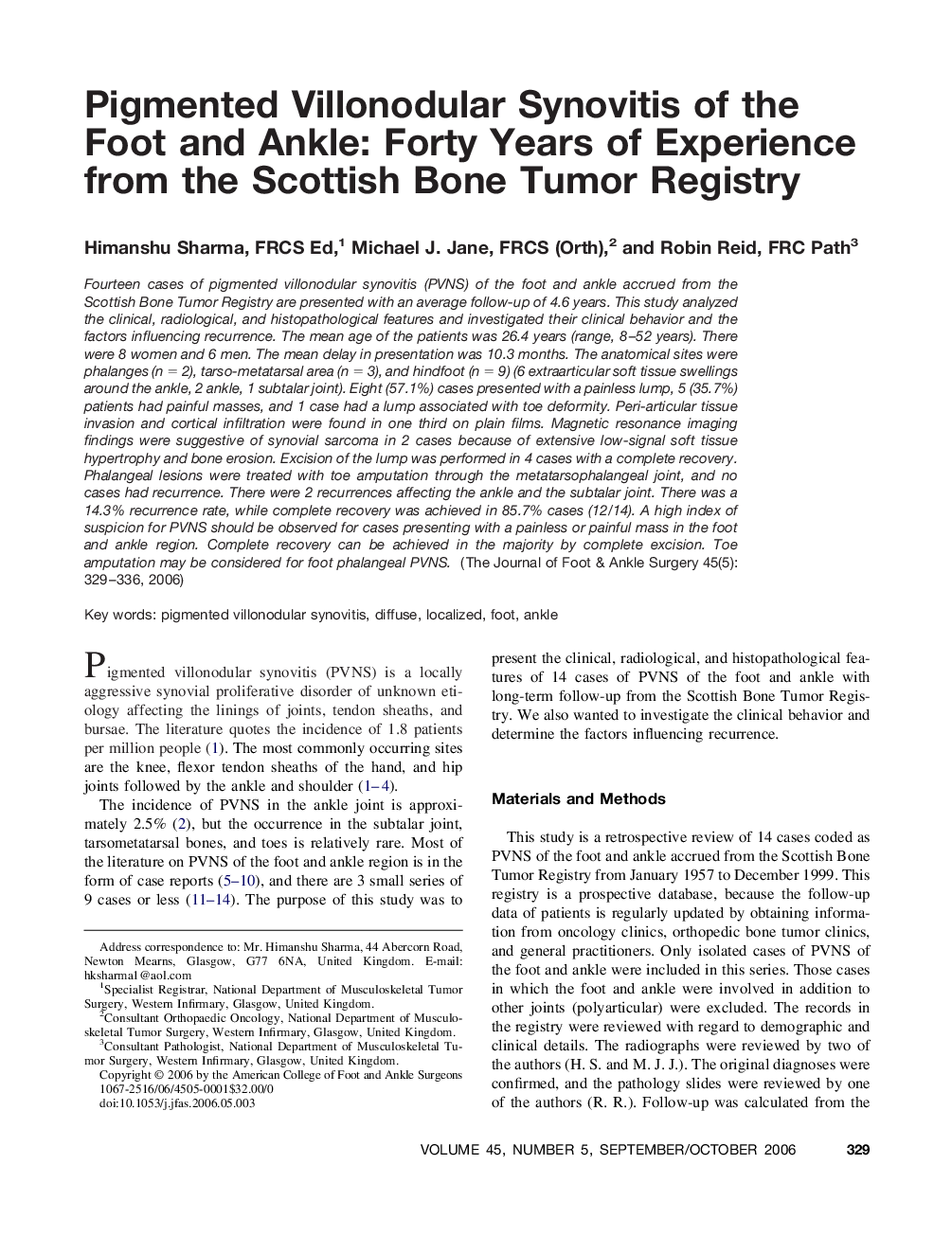| کد مقاله | کد نشریه | سال انتشار | مقاله انگلیسی | نسخه تمام متن |
|---|---|---|---|---|
| 2716246 | 1565582 | 2006 | 8 صفحه PDF | دانلود رایگان |

Fourteen cases of pigmented villonodular synovitis (PVNS) of the foot and ankle accrued from the Scottish Bone Tumor Registry are presented with an average follow-up of 4.6 years. This study analyzed the clinical, radiological, and histopathological features and investigated their clinical behavior and the factors influencing recurrence. The mean age of the patients was 26.4 years (range, 8–52 years). There were 8 women and 6 men. The mean delay in presentation was 10.3 months. The anatomical sites were phalanges (n = 2), tarso-metatarsal area (n = 3), and hindfoot (n = 9) (6 extraarticular soft tissue swellings around the ankle, 2 ankle, 1 subtalar joint). Eight (57.1%) cases presented with a painless lump, 5 (35.7%) patients had painful masses, and 1 case had a lump associated with toe deformity. Peri-articular tissue invasion and cortical infiltration were found in one third on plain films. Magnetic resonance imaging findings were suggestive of synovial sarcoma in 2 cases because of extensive low-signal soft tissue hypertrophy and bone erosion. Excision of the lump was performed in 4 cases with a complete recovery. Phalangeal lesions were treated with toe amputation through the metatarsophalangeal joint, and no cases had recurrence. There were 2 recurrences affecting the ankle and the subtalar joint. There was a 14.3% recurrence rate, while complete recovery was achieved in 85.7% cases (12/14). A high index of suspicion for PVNS should be observed for cases presenting with a painless or painful mass in the foot and ankle region. Complete recovery can be achieved in the majority by complete excision. Toe amputation may be considered for foot phalangeal PVNS.
Journal: The Journal of Foot and Ankle Surgery - Volume 45, Issue 5, September–October 2006, Pages 329–336